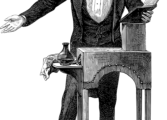Emma, Jane Austens literary masterpiece, is a novel that has captivated readers for centuries

With its strong-willed and complex protagonist, Emma Woodhouse, Austen weaves an intriguing tale of love, social status, and personal growth in 19th-century England. In this article, we will delve into the intricacies of Emma, exploring its significance and historical context.
Emma, published in 1815, is often considered one of Jane Austen’s most accomplished works. Its success lies in Austen’s remarkable ability to create realistic characters and to satirize the social customs and societal expectations of her time. The novel revolves around the life of Emma Woodhouse, a young woman residing in the fictional village of Highbury. Emma, confident in her matchmaking abilities, embarks on a series of ill-fated romantic endeavors, only to realize her misguided perceptions and the consequences of her actions.
At its core, Emma is a coming-of-age story that explores themes of self-discovery and personal growth. Austen presents us with a flawed heroine who, through her experiences and interactions with other characters, learns the importance of humility, self-reflection, and the acceptance of one’s own imperfections.
Jane Austen’s writing style is characterized by her keen observations of human behavior and her witty social commentary. In Emma, she offers a sharp critique of the rigid social hierarchy prevalent in Regency England. Through Emma Woodhouse and the supporting cast, Austen illustrates the subtle nuances and unspoken rules that govern societal interactions. She portrays the stark differences between the upper-class aristocracy and the lower gentry, highlighting the limitations and expectations placed upon individuals based on their social standing.
Over time, Emma has garnered significant acclaim and has become a staple in English literature. Its enduring popularity can be attributed to its universal themes and timeless characters. Emma Woodhouse’s journey from naivety to self-awareness resonates with readers of all generations, as it explores the complexities of human nature and the challenges of navigating societal expectations.
In recent years, Emma has experienced a resurgence in popularity, thanks in part to various adaptations for stage and screen. These adaptations have introduced a new audience to Austen’s wit and social critiques, ensuring that Emma’s legacy lives on.
To maximize search engine visibility, it is crucial to structure this article in a way that increases the likelihood of being featured as a snippet on Google search results. By incorporating bullet points, we can provide concise information that is easily scannable for both readers and search engines. Here is an example of a section structure:
1. Introduction
– Brief overview of Emma and its significance in Jane Austen’s body of work.
– Introduction of the main protagonist, Emma Woodhouse.
2. Historical Context and Evolution

– Discussion of the societal landscape during Austen’s time and its influence on the novel.
– Analysis of the novel’s reception upon its publication and its subsequent rise in popularity.
3. Themes and Analysis
– Exploration of the themes of self-discovery, personal growth, and societal critique in Emma.
– Analysis of Austen’s writing style and her use of satire to highlight social conventions.
4. Cultural Impact and Adaptations
– Examination of how Emma has retained its relevance and popularity over time.
– Discussion of notable adaptations on stage and screen, and their contributions to Emma’s enduring legacy.
In conclusion, Emma by Jane Austen is a literary masterpiece that continues to captivate readers with its timeless themes and rich characterization. With its exploration of societal expectations and personal growth, Emma serves as a reflection of the human condition, resonating with audiences of all generations. Whether through the pages of the original novel or the various adaptations it has inspired, Emma remains a beloved work of art that continues to enthrall and enlighten its readership.
















































